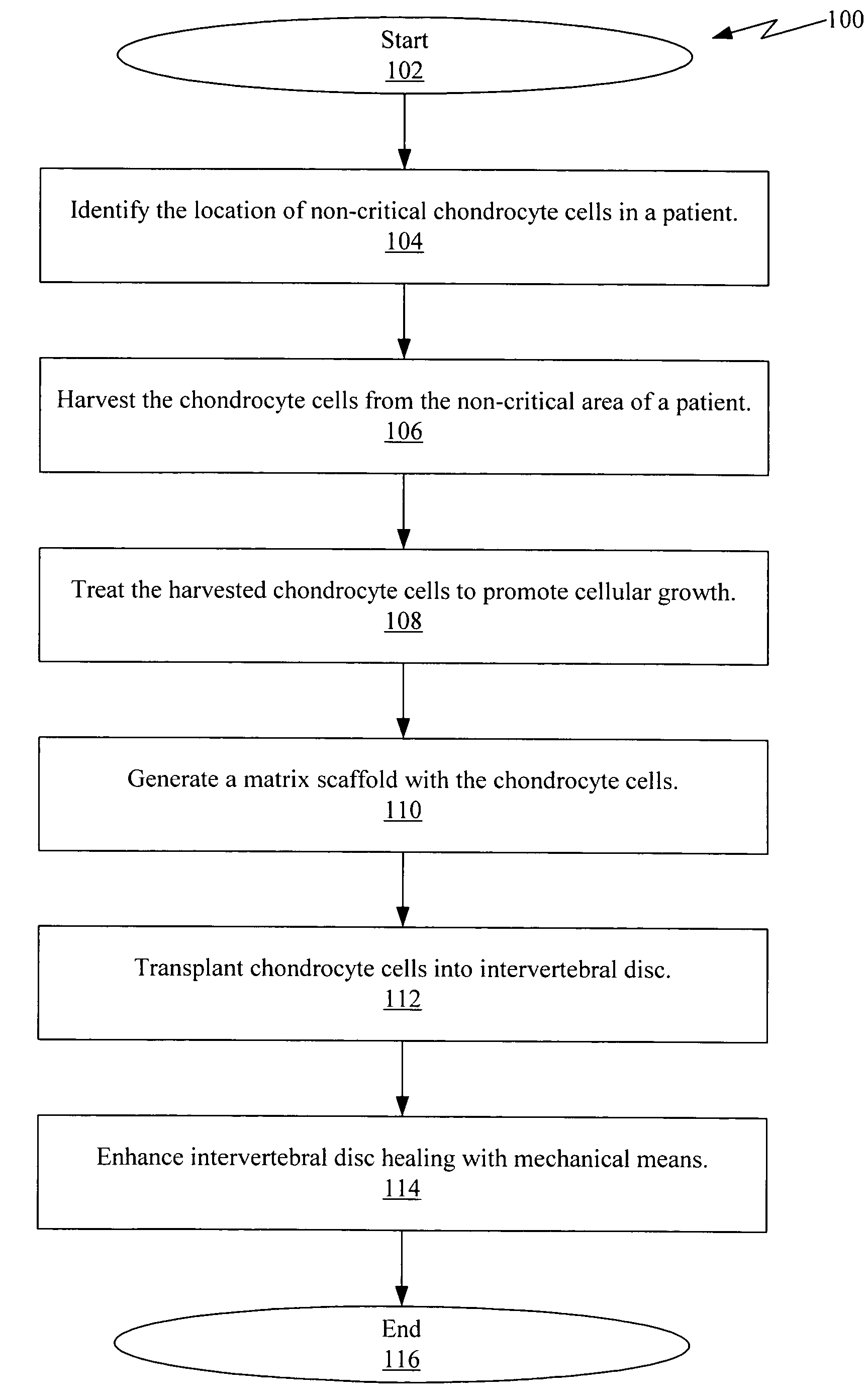Method of intervertebral disc treatment using articular chondrocyte cells
a technology of articular chondrocyte cells and intervertebral discs, which is applied in the field of treatment of diseased or traumatized intervertebral discs, can solve the problems of premature failure, synthetic disc replacements that tend to wear out, and do not restore normal disc shape, physiology or mechanical properties, etc., and achieve the effect of increasing the efficiency of cultured cells
- Summary
- Abstract
- Description
- Claims
- Application Information
AI Technical Summary
Benefits of technology
Problems solved by technology
Method used
Image
Examples
Embodiment Construction
[0015]Unlike known approaches that require autologous nucleus pulposus chondrocyte like cells obtained by aspiration or biopsy of discs of a patient, articular chondrocytes cells may be harvested from non-critical areas of a patient. Such non-critical areas may include knees or the talus area. Guidelines for tissue procurement including surgical techniques of removal are well described in the literature.
[0016]Turning to FIG. 1, a flow diagram 100 of articular chondrocytes cell therapy is illustrated. The flow diagram starts 102 with identifying the location of non-critical articular chondrocyte cells within a patient that may be harvested 104. The non-critical articular chondrocytes are harvested from the identified location 106. The harvested sterile nucleus pulposus from non-critical areas of a patient may be morselized and washed with phosphate buffered saline. The cells are released from the extracellular matrix with 0.2% clostridial collagenase (Worthington CLS II, 140 u / mg) an...
PUM
| Property | Measurement | Unit |
|---|---|---|
| diameter | aaaaa | aaaaa |
| pore diameter | aaaaa | aaaaa |
| mechanical properties | aaaaa | aaaaa |
Abstract
Description
Claims
Application Information
 Login to View More
Login to View More - Generate Ideas
- Intellectual Property
- Life Sciences
- Materials
- Tech Scout
- Unparalleled Data Quality
- Higher Quality Content
- 60% Fewer Hallucinations
Browse by: Latest US Patents, China's latest patents, Technical Efficacy Thesaurus, Application Domain, Technology Topic, Popular Technical Reports.
© 2025 PatSnap. All rights reserved.Legal|Privacy policy|Modern Slavery Act Transparency Statement|Sitemap|About US| Contact US: help@patsnap.com

